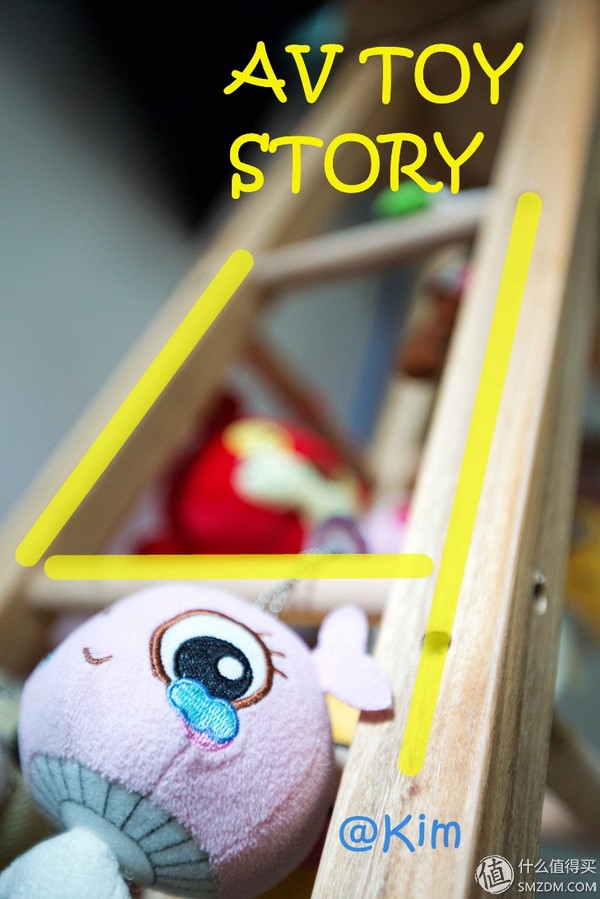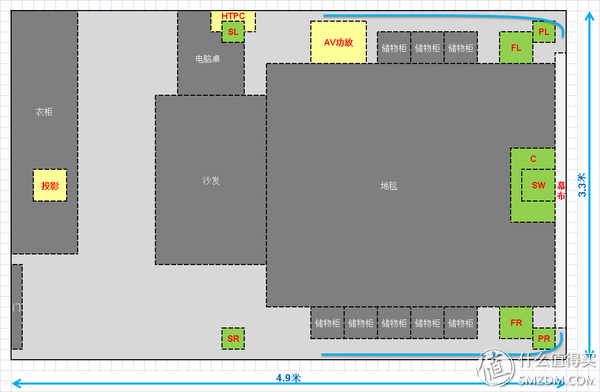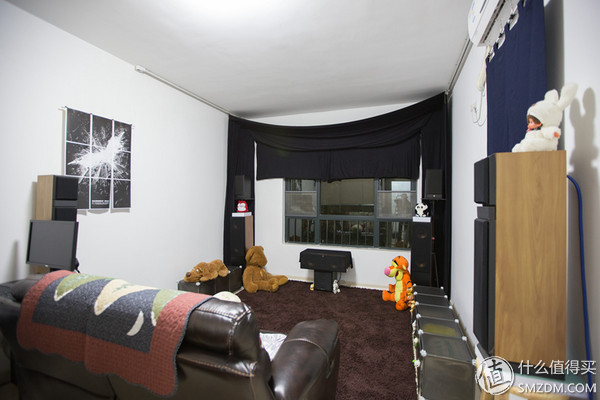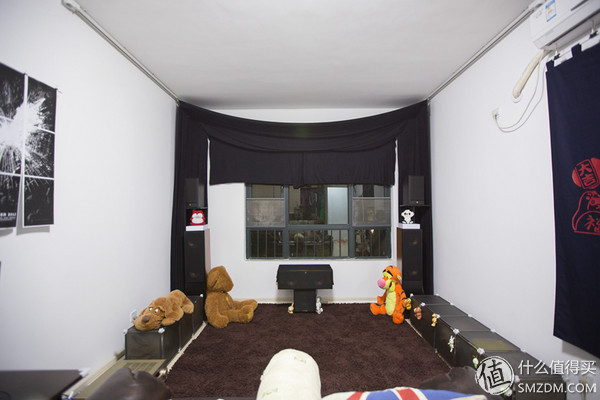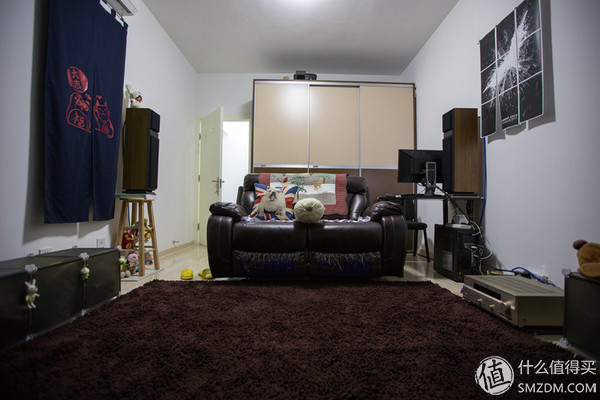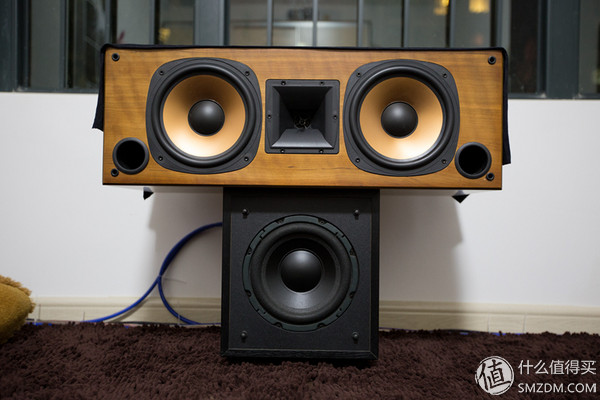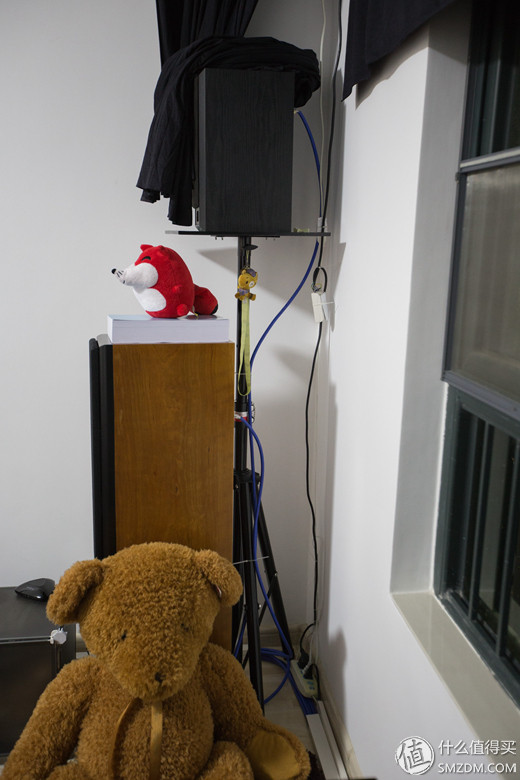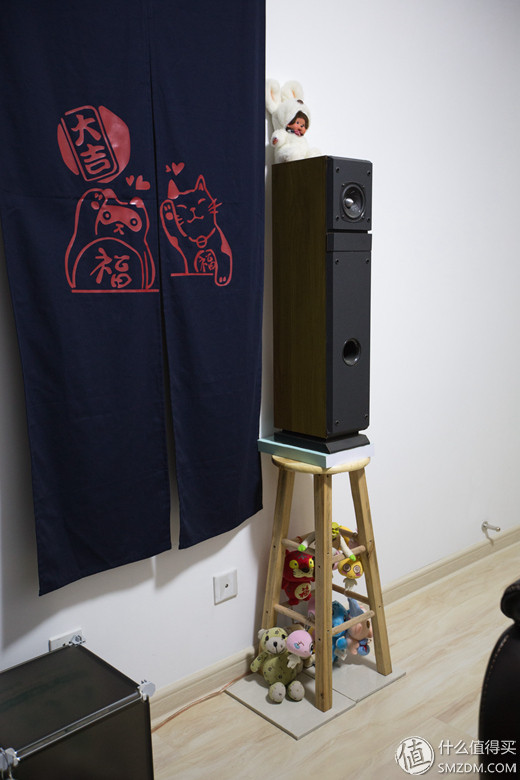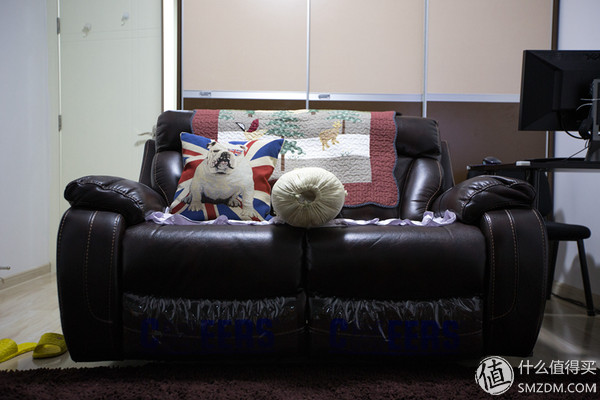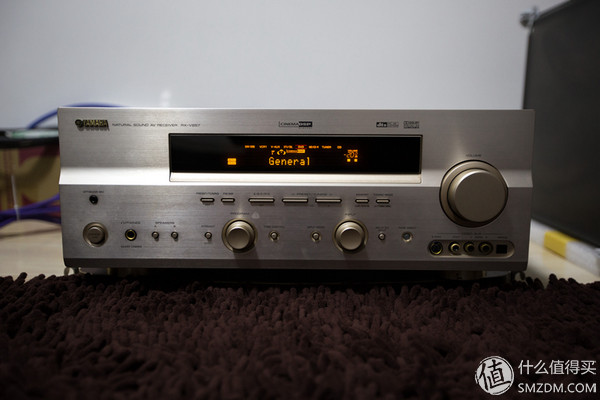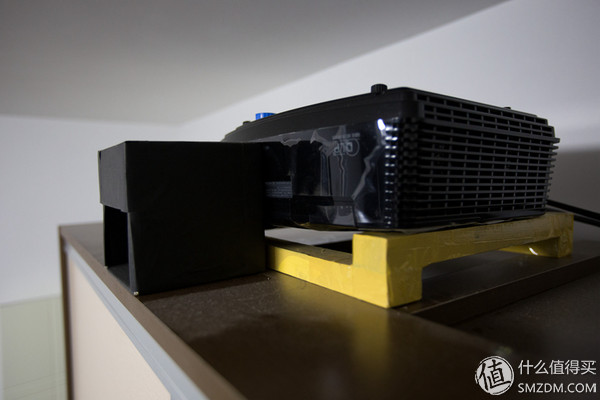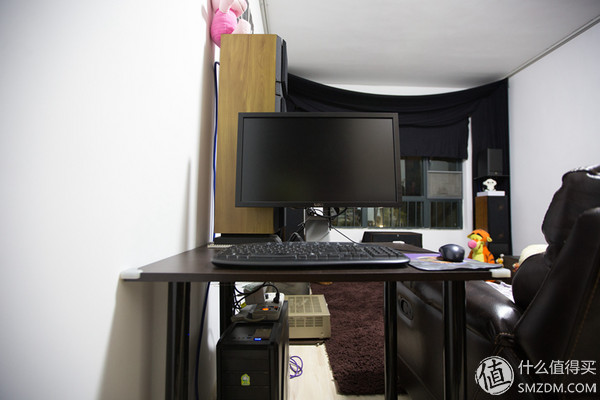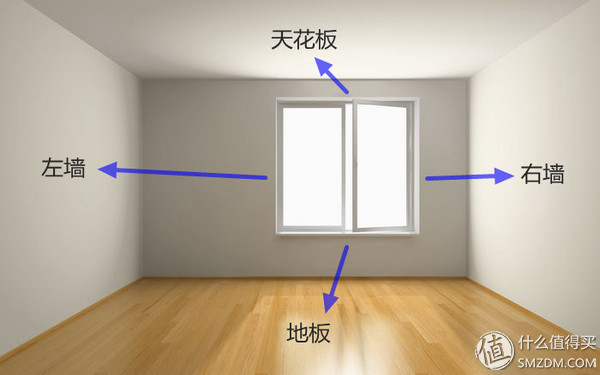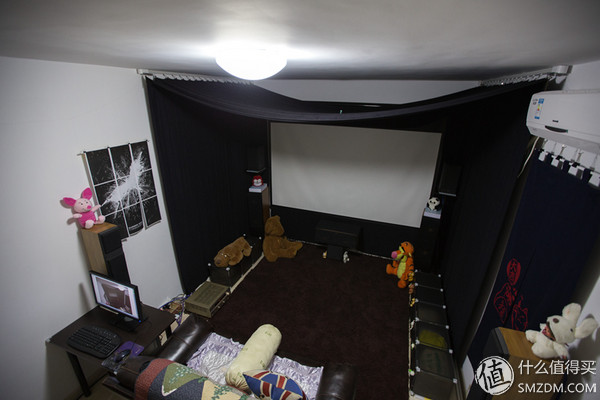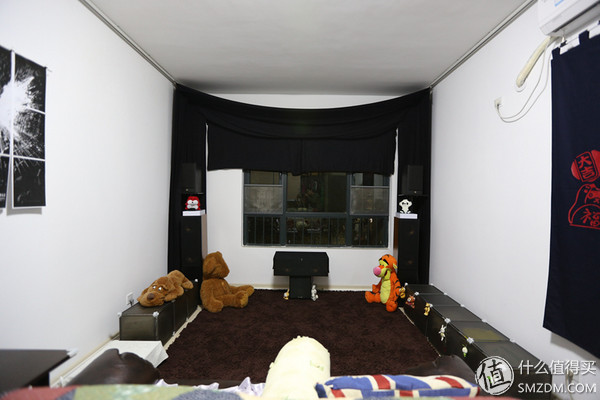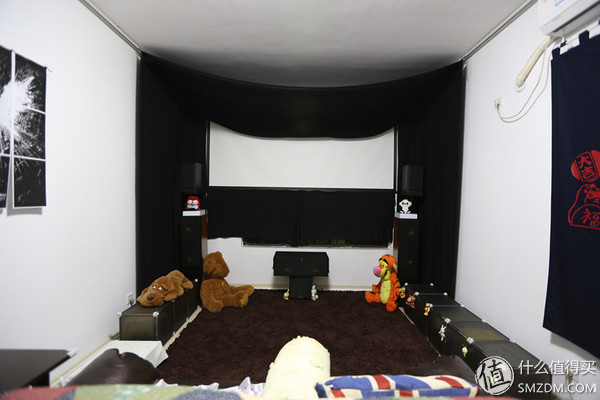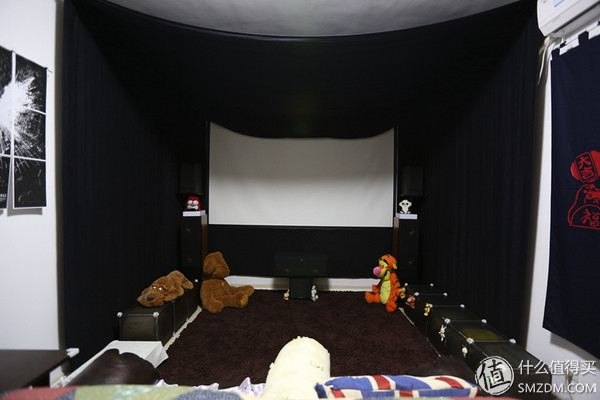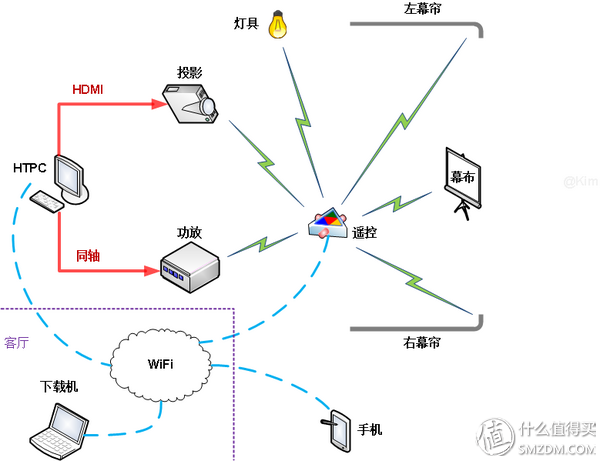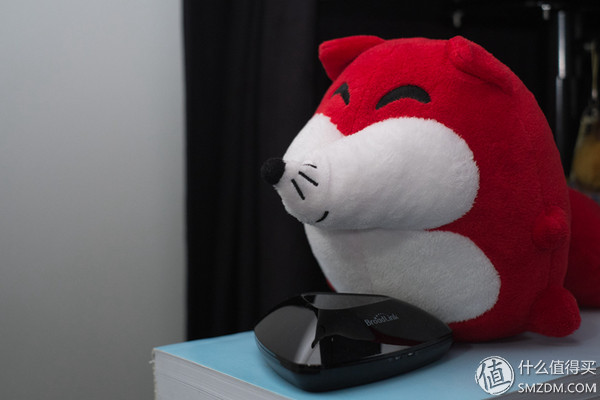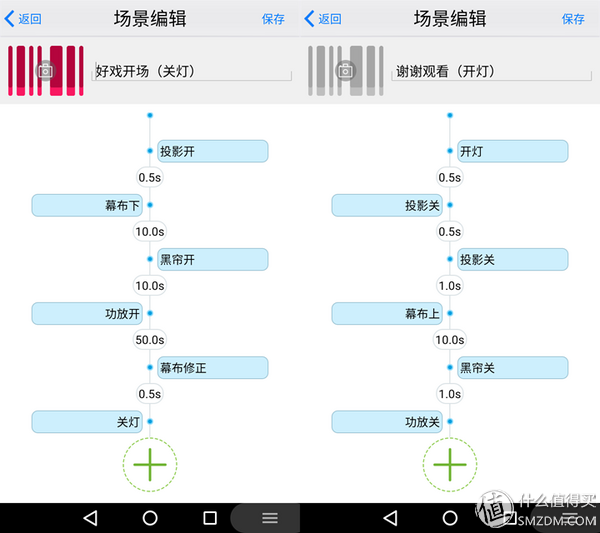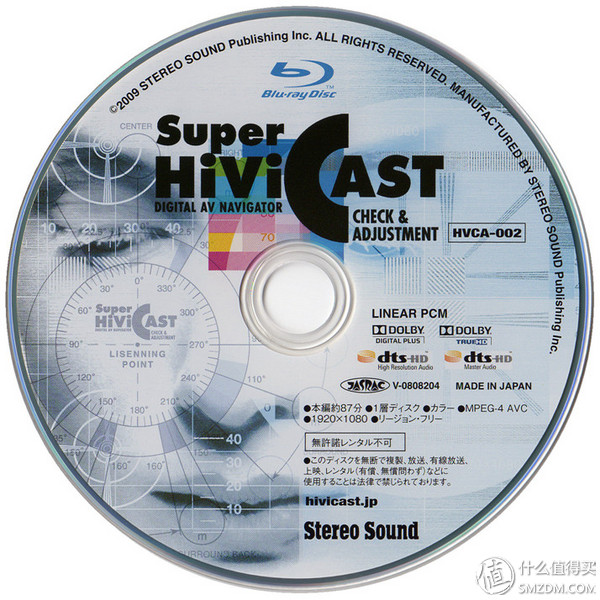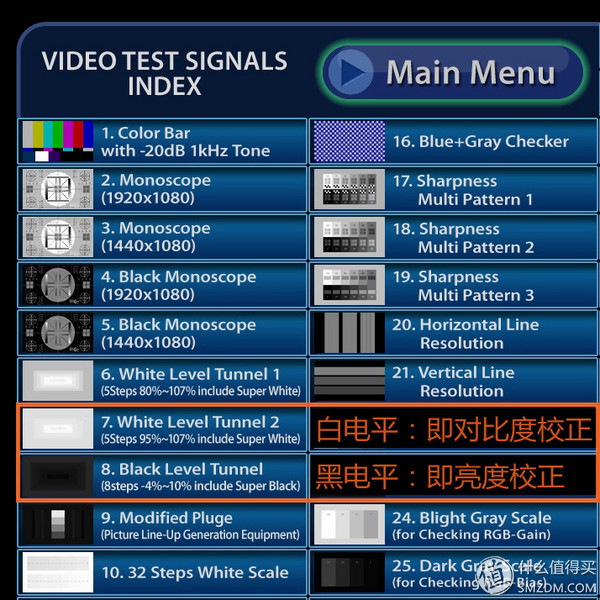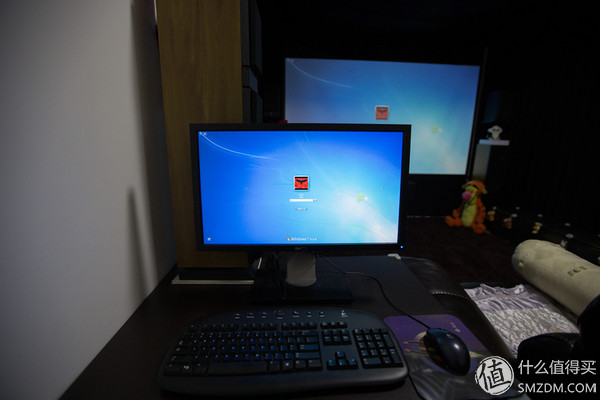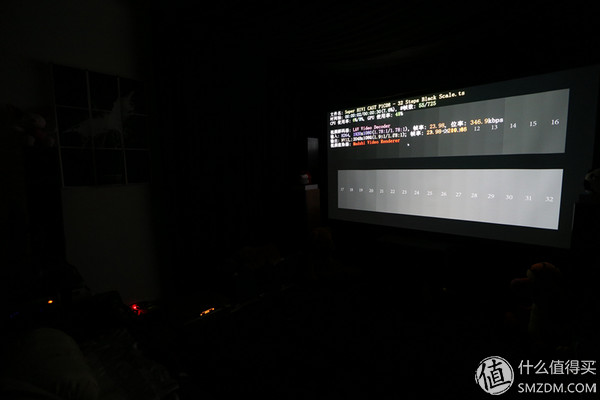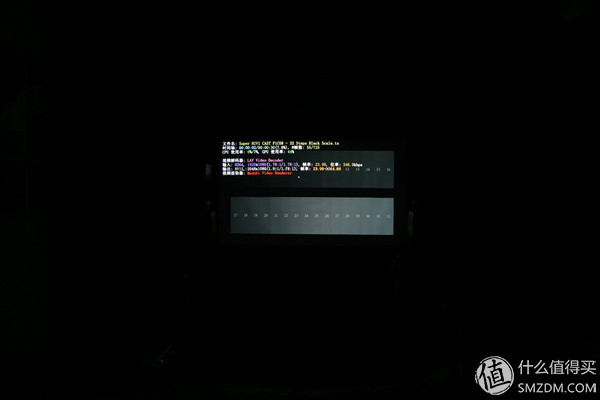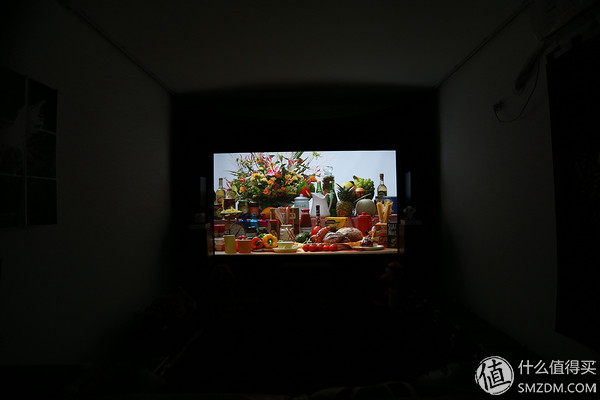For fans, it is a great pleasure to appreciate God in the cinema. However, it was not common for the mainland to be screened, so some kind of theater system with initial “family†came into being. Counting that Kim's home theater has been tossed for more than a decade, it has gone through three phases before and after, and there is still room for improvement. Simply review this ordinary road... A : 540p projection, entry amplifier, no-name 5.1 speakers, DVD material; Phase II : Update speaker, update 720p material; Phase 3 : Updated 1080p projection, updated midrange amplifier, updated 8-inch gun, updated 1080p footage. There are clouds, early burning equipment, pickled cabbage (wire), and high-firing property. Although Kim sticks to the spirit of temperance in his temperament all year round, he just happens to move to his new home and can't help but start the fourth phase of the home theater project by the way of the north wind. A, video equipment Projection: Mitsubishi HC4000, the old phase III project. Screen: 119-inch electric, secondary income. Ideas: Projection has no motivation for upgrading temporarily. On the one hand, there is no love for 3D. On the one hand, 4K resources are not popularized, and on the other hand, the escalation indicator cannot be found on hard indicators. The screen was upgraded from 90-inch to 119-inch, which is the biggest dividend the new home brings, and is looking forward to the next move (dreaming about sleeping in). B. Audio equipment Amplifier: Yamaha RX-V657, Lee's old phase III project. Main box: Qin Chao K8S main box, second-hand income. In the home: Qin Chao K8S home, second-hand income. A sense of presence: miscellaneous bookshelves, the main box of the old phase of the project. Surround: Raven brand TB4 unit is guided to the landing box and the main box of the old phase III project. Subwoofer: Raven licensing power 8 inch gun, Li old three-phase project. Idea #1: It's no longer true that the amplifier is not the next generation! To be honest, after listening to the fungus, I did not think that the next-generation audio track could bring about much improvement. From the technical point of view, the so-called next generation audio track (DTS-HD, Dolby TrueHD) is only higher than the normal audio track (DTS, AC3) code rate. Is not a revolutionary audio technology. In contrast, the newly released immersive soundtrack (DTS:X, Dolby Atmos) brings object-based codec black technology from recording, mixing, and playback. This is the dry product that really makes fungus moving. Of course, moving into action will depend on the popularity of new audio tracks, not just resources, but more importantly the price point. Idea 2: The reason for replacing the first three (main box & center) is to experience the so-called "theater sense" brought by the large diameter + horn. In fact, the qualitative change brought by the change of the box is indeed more obvious than the change of the amplifier, but This qualitative change also has two sides. C. Playback Device = HTPC Operating System: Win7 Pro 64-bit CPU: Intel Xeon E3-1230 v2 CPU cooling: Kyushu Aeolus, Lucifer, fanless Graphics Card: Dylan Constant HD7750 (AMD Catalyst 14.12) Graphics Card Cooling: ARCTIC, Accelero S1 PLUS, fanless Sound Card: Music of the States Moye Digital, coaxial output, old Monitor: Dell U2311H Playback Software A: PotPlayer 1.6.49343 (32 bit), LAV Filters 0.67.0, madVR v0.89.17 Playback Software B: TotalMedia Theatre 6.7.1.199 Idea 1: On the premise of guaranteeing hardware performance, this update focuses on energy-saving and noise reduction. Both CPUs and graphics cards adopt a low-power version and are supplemented by a fanless cooling solution, which basically eliminates the impact of fan noise on the viewing. Idea 2: The player still holds both hands, the original disk is handed over to the TMT, and the other is left to the PotPlayer kit. D, computer room facilities Room: 4.9mx long and 3.3m wide Curtain: Electric Curtain Kit (Du Ya Motor) + Dark Soft Cloth Carpet: Brown chenille material covering 2.7mx 2.3m area Sofa: Chivas Theater sofa, two people Smart Remote: BroadLink RM-Pro, Easy Control APP (Android Version) Ideas: Viewing the environment transformation is the core content of the current project, first is the quasi-independent audio-visual room, followed by the use of dark colors as much as possible, and finally a sofa suitable for both sides, and strive to restore the cinema character. In addition, the introduction of intelligent remote control to simplify the cumbersome switch operation ~ The audio and video room is located in the largest room of the new home (commonly known as the master bedroom) to ensure sufficient projection distance and toss space, while being isolated from the living room and other rooms. The initial picture of the room is as follows. It is 4.9 meters long, 3.3 meters wide and 2.8 meters high. Its left-door right window is transparent to the north and south. The reason why it is positioned as a “quasi-independent video room†is because people’s prices are simply unpredictable. This video room has to be part-time studies, cloakrooms, entertainment rooms, and even rooms... Fortunately, after a few sacrifices and tangles, the various audio and video rooms The functions of the harmonious coexistence and overall plan layout are as follows: The process of turning monotonous and dull plans into real scenes, skipping the table, directly takes a look at the results of hardware implementation. Well, the quasi-independent audio-visual room was really crowded. I didn't expect that this "main bedroom" still has so many "people"--in terms of sofas--as the subjective perspective, to see the pattern of the front, left, right and back. Forward: The most eye-catching, I am afraid not the small monster hung on the right side of the locker, but the positive pressure of the black curtain, I know you want to say like $% ... because the curtain completely cover the window, so the curtain is also saved, regardless of During the day or night, putting down the curtain can block the natural light. All dark-colored objects or decorations are designed to weaken the interference light service, that is, to make the projection environment as “dark†as possible without affecting the part-time function of the room. Left: An invisible poster board is set on the wall to enhance the temperament of the sound developing room, and secondly, it is also shaded to reduce the interference of the white wall on the left and right side of the viewing area. The power amplifier's position is very subtle, because its panel display is the typical active light source of the audio-visual room, so try not to put it in front so as not to become an interference element. The left surround is placed on the computer desk, because the sounding unit is in the upper part of the cabinet, so it is basically protected from the display. Right: The layout idea is similar to that on the left side. The Japanese style curtain hanging under the air conditioner is also a combination of shading and decoration. rear: Unlike the dark tone in front, the rear does not deliberately do any shading, because the rear is not in the viewing area, and too dark can affect the part-time function of the room. At the top of the wardrobe is a half-shadow projection, which saves the trouble of hoisting, but also can not be integrated into the environment. Although the cinema sofa is a two-person location, three additional temporary viewing spots can be added behind the sofa to meet the onlookers' needs. First of all, let's say hello to these little partners (not to mention you monsters). In the double 8-inch middle of the bully, a single 8-inch subwoofer was a bit embarrassed low-key, can only willing to make a tripod. Why don't you change the cannon with the top three (Main & Center)? Er ... ... no money, space is small, fungus, important? Because the short side of the room is only 3.3 meters, after deducting the width of the projection screen (2.6 meters), the remaining space on both sides is very small, which affects the placement of the main box to some extent. In the same way, the sense of presence (previously increased) is basically placed against the wall, and it is not possible to pull the horizontal distance from the main box (the recommended value of Yamaha is 0.5 to 1 meter), which results in the DSP sound field being not wide enough. It is true that this is due to the choice between sound and picture. To get a 119-inch projection screen, you can only cast a short side, and the short side will inevitably cause the front sound field to narrow. Originally put the feeling of telepresence directly on the main box, and later considered the resonance of the box and the danger of high altitude, and finally used the shelf to hold the sensation of presence. In the narrow corner, crowded the main box and the tripod, there are a few monsters, but also chanted ~ The left surround is a computer desk, the right surround is a high wooden stool, and ... a group of small monsters, headed by Shrek. To be honest, in the absence of a back-surrounding (without the previous generation, where it came from), the existing surround position is clearly at the front. This is also the result of a compromise, because it does not want the speaker to be on the wall, so the telepresence and surround have to rely on the bracket (occupied floor space), making the placement very limited. The Chivass sofa is worth the money, and it is really comfortable to lie down, and it can even be a bed in the middle of the day. In contrast, the sofa in most theaters is probably only a "chair." Or the old amplifier, then the HTPC coaxial output, decoding the ordinary audio track (DTS, AC3), loading Yamaha's unique DSP sound field, and finally present 5.1 + 2 channel. The orange light of the panel display is dazzling. I don't know how to dispose of the amplifier in the neighborhood near the center. How to overcome this visual disturbance... Because the projection of the forehead can not be directly inverted on the plane, so the use of the previous "projection inverted bracket", so that it lies flat on the top of the cabinet to meet the gray. The black box at the front of the projection lens mimics the function of a "shade shield" to weaken the stray light outside the projection light path (i.e., the light outside the curtain). HTPC (computer on the computer, what ABC) nothing to say ... here directly replace the conventional desktop speakers with audio and video systems, can save the province; with Logitech's wireless mouse and keyboard, nest on the sofa can also easily control the HTPC. Given the similarities in the installation of audio and video hardware, the above points are almost finished (uh, really did not do acoustics, you know the fungus), then talk about the most glaring part ~ Playing sound is about being quiet and playing with projection in pursuit of darkness. For fans with independent audio and video studios, it is easy to get a cinema-like viewing environment with dark-colored software. However, most fans can only find a balance between black (live) and white (life). The blackening of the viewing environment is divided into two levels: A: Blocking external light , that is, common curtains, shading cloths, door seals, etc., mainly cover the disturbance light from the outside of the viewing environment (natural light, next door lighting); B: The weakening of internal light , that is, dark furniture and drapery (carpets, wallpaper, curtains, etc.), mainly attenuates the disturbance of the light reflected by the screen on the floor or furniture. The second level is often the most easily overlooked and the most difficult to overcome. Because it is difficult to anticipate the disturbance of the internal light to the projection environment in the early stage of implementation (renovation), it is usually only at the moment when a high-brightness picture is thrown that it will be painful to comprehend the magic of internal light. Therefore, for non-independent audiovisual rooms, especially the living room party, if we want to not blacken the internal light without destroying the living environment or affecting the family harmony, I am afraid that it is not easy to be happy. The text is imaginary, and the picture is real. Take the window natural light as an example. The so-called internal light is such a drop: The principle of projection understands that when a highlight (non-night scene) picture is projected onto the screen, the curtain is equivalent to the window in the figure above, and the reflected light on the screen is equivalent to the natural light outside the window. The reflected light will illuminate the ceiling, side walls (including the back wall), and the ground. Similarly, the light or light colored furniture (air conditioners, tables, cabinets, glass, mirrors, etc.) will be illuminated in the interior. It is worth noting that These lights will also reflect N times in the room, and eventually “create†the effect of a similar light-on projection (ie, you always turn on the lights to see the projection of Orz), so they are defined as internal light. Grasping the causes of internal light, there are only one principle to implement the principle of enforcing the right medicine: to eliminate the disturbing light in the area of ​​the film and television line as much as possible, and the non-line-of-sight area needs no treatment. The so-called visual and television line area, that is, the field of vision that can be seen by the human eye when sitting in a sofa in a viewing posture, can be roughly estimated as the entire cuboid space between the viewer's knee and the curtain. The shading treatment in this space is easy to difficult: the furniture has nothing to say, try to choose the dark color or decorate with dark colors; the ground is also easy to handle, directly lay the dark floor or cover the carpet; the ceiling is tangled, dark ceiling is not necessarily harmonious The side walls are also cold, and you can't always turn the room into a cave. Ever since, the balance between black and white has emerged, and applause called for "active curtains" The applause here is sparse because the appearance of the curtain has been spoiled before. Now it is completely unfolding. In order to facilitate the quick switching between the black and white modes of the audio room, here are two sets of electric curtain kits, one set for the left and right ones (the motor operates independently and operates remotely), which is used to hang a curtain of dark soft cloth. A thick cotton rope (6mm in diameter) is embedded in the folded part of the soft cloth, and the outside is clamped with small steel teeth (with a hook curtain clip) and then hung on the hook of the curtain track. Since the right wall is equipped with air conditioning, the curtain track is limited to 2 meters long (ideal length should be 2.7 meters, that is, the distance from the knee to the curtain), and the area covered by the curtain can only use the poster board (left side) and Japanese style curtain (right) makes up. Next, I will return to the sofa to enjoy the process of combining the curtain (curtain) and the double-edged sword, followed by a slow motion with my left hand and right hand. There is a black foot in front of the wood? Nonsense, projection did not open, how to teach people to shine ... Well, quickly wiring joint debugging! A map is worth a thousand words. The topology of the entire four-phase project is as follows. It consists of network topology, signal topology, and remote control topology. Network topology : Wireless routers and downloaders are located in the living room, HTPCs, mobile phones and smart remotes are networked via WiFi. Signal topology : HTPC's video card takes the HDMI output video to the projector, and the sound card goes SPDIF (coaxial) to output the audio to the power amplifier. Remote Control Topology : Smart Remote Control Infrared projection, power amplifier and air conditioning (skip) to control the curtains, curtains and fixtures with RF. The first two topologies are nothing to talk about, or talk about this little fox (oh no, smart remote control) ~ the so-called smart remote control (or universal remote control) is the "make the phone into remote control", its significance is not only to replace a few traditional The remote controller is based on the scene editing function of the mobile phone APP to realize one-button opening of multiple devices, which can be described as a mid-stage special drug for lazy cancer. Taking into account the compatibility of the remote control mode of the target device, a dual-mode smart remote control (BroadLink RM-Pro) supporting infrared and radio frequencies was finally selected. After some learning and adaptation, RM-Pro perfectly covers the remote control device in the AV room, and controls the projection (switch), power amplifier (switch, volume), air conditioning (basic function), curtain (up and down), and curtain through the easy-control APP. Curtains (switches) and luminaires (switches), decisively allow five remote controllers to stay without pay. Next, according to the needs of the application scenario, combining specific control points and time intervals into sequences, a lan-style “one-key opening/diverging†can be achieved, and the cumbersome remote control group can be bid farewell. Brainbubble, when the construction error causes the screen height to be low (well, that's me), each time the curtain is rolled up, it must be rolled back a little. Otherwise, the projection screen can't perfectly match the curtain. It's annoying, but Let's edit the "curtain revision" in our village. Generally speaking, the software settings include HTPC settings, projection debugging and power amplifier debugging. The HTPC settings are subdivided into player deployment, video output adaptation, and audio output adaptation. Originally intended to lengthen the whole length of the soft-tone process, but still hold back after quiet, not because of lazy cancer, but because the list of individuals set up a soft tone is of little significance. On the one hand, the objective environment (equipment, wire, room, decoration, furniture, etc.) vary widely. On the one hand, subjective perception (preference and recognition of sound and picture) is not the same, and the related soft tone setting does not have universal reference value. From briefly. To be honest, the HTPC is not the best choice for audio and video sources. Compared with mainstream playback devices (Blu-ray player BDP, HDP HD player), HTPC usually has the disadvantages of cumbersome operation settings, and its quality depends not only on the hardware, operating system and driver combinations, but also with the playback software. The deployment is closely linked. It is no exaggeration to say that even a properly set up HTPC can only match the midrange player with the default settings in terms of audio and picture quality. As far as improperly configured HTPCs are concerned, there may be even lower end players. Kim chose non-mainstream because HTPC has the natural advantages of compatibility, functionality, and flexibility. The re-cattle player may also encounter incompatible media formats or special subtitles that cannot be displayed. The HTPC is almost never picky eaters; the player in the bull is just a media player, and the HTPC is originally a PC, Internet, chat, games, Office and retouching are omnipotent; in the face of new media formats or new technologies, players can only gain limited capabilities through firmware updates, and HTPC can easily keep up with the times by replacing parts or even just replacing software. foot. The current project is mainly to meet the 2D 1080p resource playback, so only two sets of playback software are deployed on the HTPC: TotalMedia Theatre (referred to as TMT) is used for playback of BDMV packages (such as Blu-ray original discs); PotPlayer Kit (PotPlayer Player + LAV Filters) Decoder + madVR renderer) Used for playback of non-BDMV packages such as re-encoding or ts. TMT is a commercial software that is relatively simple and has a more user-friendly interface. With simple default settings, TMT can be perfectly output. PotPlayer three-piece software is open source software. It is very powerful, it is very cumbersome to set up, the process is very tossing, but the final results are very touching. In fact PotPlayer itself is an independent player (with its own decoder and renderer), but after all, Tiger Balm is not professional enough, in order to obtain the perfect output quality, you must plug in LAV Filters and madVR. ). Detailed collocation and setting up the Raiders, please move across the strait tribe "lysandria1985.blogspot.tw", I will not remind you to take the ladder. In the study of the great god of Taiwan, the three-piece set is just an introduction game. The strongest collocation of the universe requires an external plug-in frame software SVP, a subtitle filter xy-vsfilter and a synchronization filter Reclock (commonly known as the six gods combination). So how do you check if the settings are correct? Given that the perception of sound is very subjective, in the absence of professional detection equipment (such as XTZ Acoustic Tester) or high-end AV amplifier (with its own simple frequency response analysis function), basically only by ear receipt; but the picture is not, if not Professional detection equipment (such as Datacolor's Spider-Man) or monochrome filters can also easily perform basic calibration of the screen with the naked eye. The most basic indicator in screen calibration is “gray scaleâ€. Normally, as long as the gray scale display is correct, it can output brightness standard, moderate contrast, transitional natural, and rich-level images. The calibration process is very simple, you only need to prepare a "Super HiVi CAST" test disc can follow the inside of the test wizard, calibration gray scale and even calibration color are easily not to not. It is worth noting that the Blu-ray original "Super HiVi CAST" is only suitable for the calibration of player (BDP or HDP) and HTPC Blu-ray player (TMT or PowerDVD), if you want to calibrate the open source player suite (PotPlayer or MPC+ decoder +Renderer) requires the remux version of Super HiVi CAST. For the grayscale calibration, the "Super HiVi CAST" video test article provides a special test signal: the seventh white level test (commonly known as super white), in addition to gray scale calibration, also used to correct the contrast; eighth The black level test (commonly known as super black) is used to correct the brightness in addition to the gray scale calibration. The correct process of the entire grayscale calibration is divided into three steps: 1. Restore the video-related devices (playback software, graphics driver, display device) to the default settings; 2. Adjust the system settings (input, output, RGB mode, etc.) of these devices. Make super white/black as accurate as possible; 3. Fine-tune the picture parameters (contrast and brightness) of the display device and correct the super white/black deviation margin. I am afraid that the preliminary examination report is the best chapter written in the whole chapter. As an AV player with a disability (myopia and fungus) and a limited fever temperature, my personal subjective feelings are nothing to say, and I don’t have to be too high anyway. Reference value, here continue to maintain simplicity. First talk about hearing , the main box and the center are dual 8 inch + horn speaker, in the appreciation of film and television can really bring a strong "theater sense." On the one hand, it is due to the thick and gas fields brought by the large units of the big box; on the other hand, it is due to the high-frequency dimming characteristics of the horn unit. Even at larger volumes, it does not sound harsh. Then the problem came, because the high frequency is not bright enough, when enjoying a concert or listening to a song, the timbre of the human voice is boring (male voices are changed to Zhao Peng, female voices are changed to Tsai Chin). Considering that the current project mainly serves video resources, the timbre deviation will endure as soon as the film is cool enough. Talk about the visual again. After the active light source (power amplifier, row of light pollution) is adjusted to the left through reasonable positioning, there is no longer any interference light source in front; at the same time, passive interference light (ie, internal light) in the line-of-sight area is under the support of the curtain. Basically, it was destroyed and the audience's vision was firmly locked on the curtain. After this unconventional construction renovation, without prejudice to the part-time function of the room, you can say with humility that: in terms of projection environment, this quasi-independent video room is completely comparable to independent goods. In order to prove that "the curtain" is not the technology introduced in the black PPT, it finally shows its dramatic changes to the picture. The following two screen shots are shot with full-frame 16mm lens (photo exposure parameters are the same, the picture is only reduced without no post-effects), the subjective perspective of the simulated sofa position, compared with the development of the curtain and the shrinkage of the horizon, the black technology does not need much ink force. Words. Come here, long text code is very sad, especially dragging and pulling code for more than a year (attentive viewers can easily see from exif, photo shooting time is actually January 2015 ... Orz), lazy enough How bad is the middle cancer? Telecom T Series Lead Acid Battery Custom Lead Acid Battery,Telecom T Series Lead Acid Battery,2V 300Ah Battery,Valve Regulated Sealed Battery Wolong Electric Group Zhejiang Dengta Power Source Co.,Ltd , https://www.wldtbattery.com